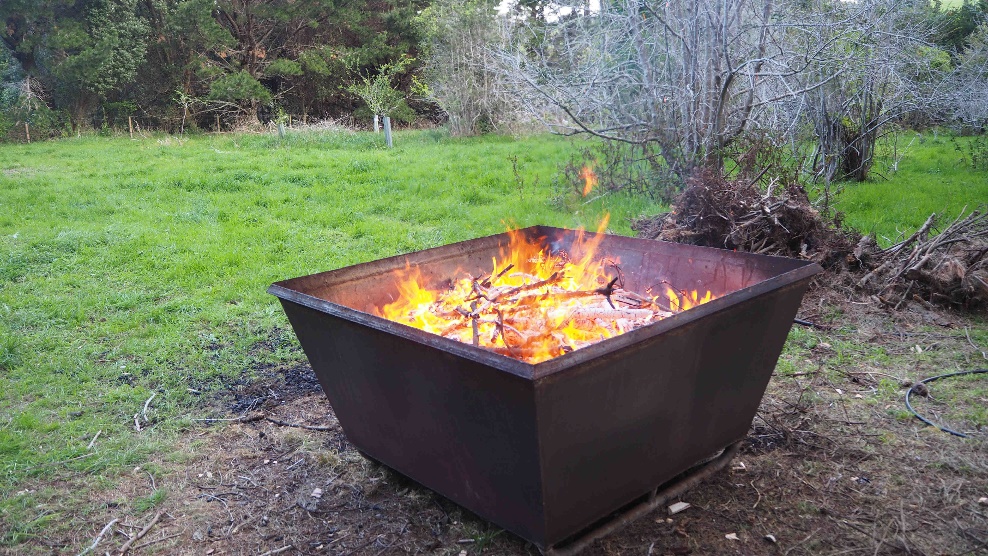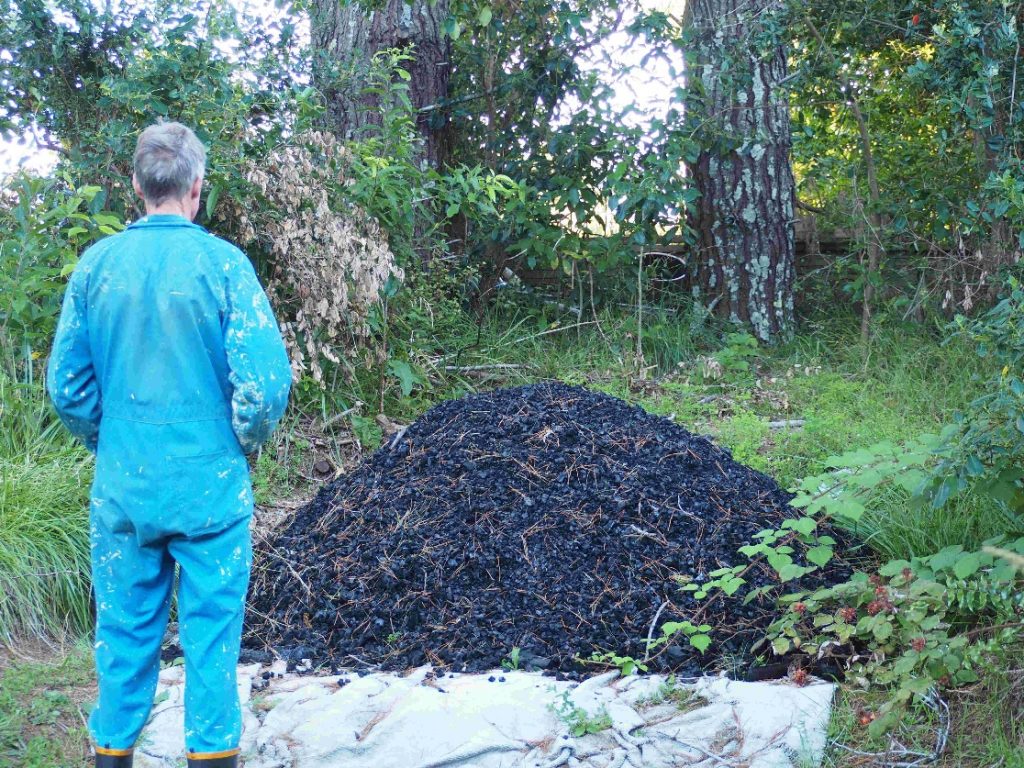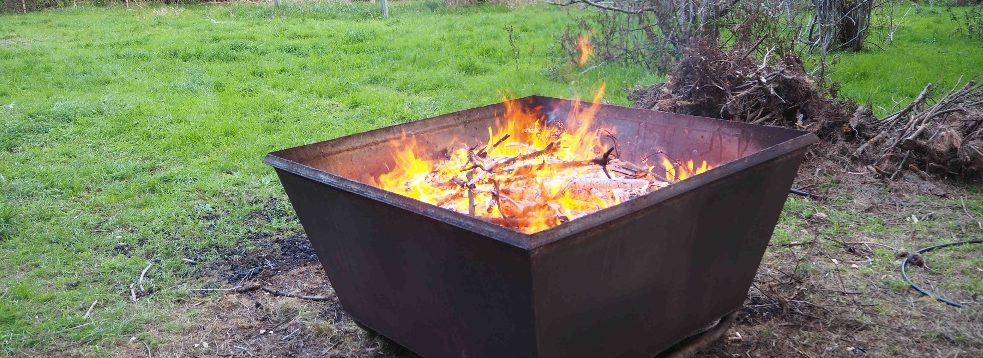My wife and I signed up for a 40 acre block of south-east facing land about a kilometre from the bush line of Mount Karioi, Raglan, and moved in in June 1998. The winter reality was very different to looking the block over in the middle of summer. We are about 8 kilometres from the sea but at an elevation of two hundred metres. The prevailing south-westerly wind is forced up and around the mountain with a consequent increase in wind speeds. The winter storms add salt to the wind.
Not only did the house shake on its piles and the carpet lift of the floor when the high winds hit but the four Japanese Cedars planted down the driveway leaned away from the wind. Thinking back, this should have set off some alarm bells when we first looked.
Regardless we happily started planting the trees we had been collecting only to watch them rapidly die back. By August we realised that fast growing shelter was our only hope and only trees I could see locally that grew fast and ignored the conditions were pines. So late in August I did what I had promised myself never to do and we bought seven hundred Pinus radiata trees.
This brings us to our current dilemma – five to six hundred twenty three year-old pines that are too branchy to be saleable in the current economic climate. We have been considering cutting down and burning them for a few years but haven’t as it seems like environmental vandalism, given the current global warming outlook. Hence we was very excited when my son mentioned he had been reading about the simplicity of production and benefits of biochar.
We had only seen Kontiki kilns and after getting a quote from a local engineering firm to build a tippable one, we went back to the drawing board. Trevor put us on to some other sources of information and after some research we decided on making the kiln ourselves using the Oregon State University design as it is relatively simple and robust. We could buy enough steel to make two for less than half the quote.

All of this took a fair amount of time and, amongst other things, on the job up-skilling in steel cutting and welding with the right welding safety procedures, but we ended up with a large flame-cap kiln.
We had several large piles of slash/smallish branches that had been cut long enough to be reasonably dry. We were very pleased with the kiln’s performance as once the burn heated up there was very little smoke apart from when new material is thrown in. Due to its size it can keep up with two people cutting and throwing in smaller sticks.

It is important to shorten sticks to less than the width of the kiln as overhanging pieces falling out can become a fire hazard when the heat had dried out the near grass. We built the kiln galvanised pipe feet giving an air gap underneath to reduce heat damage to the soil.

Having done three burns we consider the kiln has worked very successfully for our purposes.
Oddly enough, this leads us to our next dilemma – 3 to 4 cubic metres of biochar that needs to be crushed and screened.

Any suggestions would be greatly appreciated.
Then we can start worrying about activating the biochar.
Cheers,
Clyde, Diane and family.

Pretty impressive, Clyde and Co!
That’s probably a lot more material than you want to give the hobnail boot and bottle of whisky treatment. I would spread it out on a flat bit of ground and drive over it repeatedly. If you want to screen out bigger pieces, a piece of hardware cloth on a timber frame at a 45 degree angle works well. Choose the mesh size according to how small you want to grade it.
My inoculation method these days is really low-tech. After I crush my biochar, I load it into old wool fadges and pour a few buckets full of diluted manure slurry and seaweed extract over it. After a week or two it’s ready for action.
Hi Clyde, big thank you for the story.
On charging up your char pile, looking at last photo… if it was me, I’d need to stand a lot closer…
Another idea: I’m trying to get trials underway on cleaning up nutrient damaged /eutrophic water bodies. Talking with regional council scientist, university and commercial landscaper on using bagged biochar to soak up nutrients. How about investigating the renting out of biochar for trials?
Hi Clyde, i crush similar volumes by laying the biochar on a heavy tarp and driving over it a few times with the tractor. I am not fussy about how fine it gets. I activate it by several methods. I have put it in calf bedding, under chicken roosts, soaked in worm tea and in the compost bin and mixed with finished compost for potting mix. All work fine.